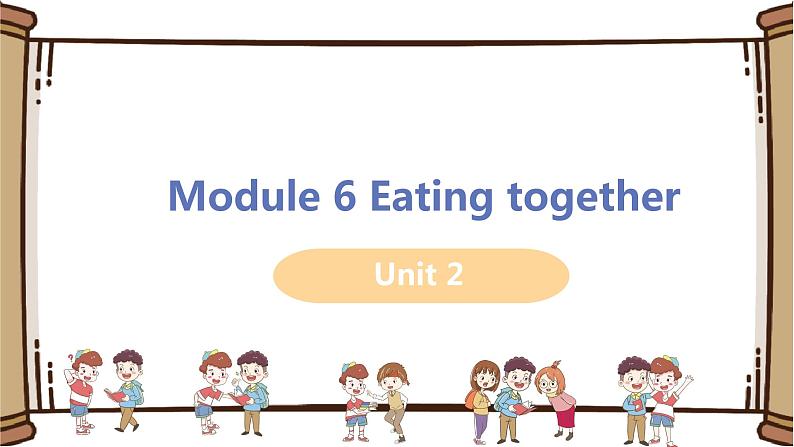










外研版 (新标准)九年级下册Unit 2 Knives and forks are used for most Western food.课堂教学ppt课件
展开Module 6 Eating together
Unit 2 Knives and forks are used for most Western food.
知识目标 |
单词 | Westerner; West; serve; similar; wing; lady; gentleman; cross; at the start of; be similar to; be used for; such as; help oneself; at the end of; as soon as; finish doing |
句型 | ①When in Rome, do as the Romans do. ②Dinner is served around 7 pm or even later. ③Knives and forks are used for most Western food. ④During the meal, you may be invited to serve yourself (usually the ladies before the gentlemen )by someone who says, “Help yourself. ” ⑤Or you will be served by someone who asks, “Would you like some . . . ” ⑥No one will be cross. | |
技能目标 |
能够运用所学的句型谈论中西方用餐礼仪的差异 | |
情感目标 |
通过学习西方用餐礼仪, 使学生体会中西方用餐礼仪的差异, 掌握相关的文明用餐的知识 | |
1. Talk about manners in Western countries and China
2. Understand the Passive Voice
The use of the Passive Voice
教学环节 | 教师活动 | 学生活动 | 备课札记 |
Step 1 Warming up | 1. Guide students to review the words and phrases of Unit 1. 2. Look at the picture and talk about the differences between a Western meal and a Chinese meal. | 1. Review the words and phrases of Unit 1. 2. Say something about the differences between a Western meal and a Chinese meal in groups. | 在语境中呈现和导入目标语言。 |
Step 2 Presentation | 1. Teach the new words: serve; wing; similar; lady; gentleman help yourself; cross 2. Look at the pictures. What do the pictures tell you? | 1. Learn the new words and practice them. 2. Talk about the pictures. | 学习预习的词汇, 为课文学习作铺垫; 并通过图片激发学生的学习兴趣。 |
教学环节 | 教师活动 | 学生活动 | 备课札记 |
Step 3 Listening and reading | 1. Let students listen to the tape and then read the passage with the questions. 2. Ask them to choose the correct answers. (1)Who is the passage written for? (a)A Westerner eating a Chinese meal. (b)A Chinese person eating a Western meal. (c)A Chinese person eating a Chinese meal. (d)A Westerner eating in a Chinese home. (2)Where might you see a passage like this? (a)In a magazine. (b)In a dictionary. (c)In an instruction manual. (d)In an airline magazine. | 1. Listen to the tape then read the passage. 2. Choose the correct answers. | 通过听读, 获取信息, 从整体上把握文章的结构和大意。 |
Step 4 Careful reading | Let the students read the passage and complete the column in the West with notes. | Read the passage in Activity 2 loudly, and complete the column in the West with notes. | 通过朗读练习和完成表格, 在语境中体会中西方用餐礼仪的差异。 |
Step 5 Summarize | 1. Guide students to summarize the words, expressions and sentences in this lesson. 2. Have them finish Activities 4、5. | 1. Summarize the words, expressions and sentences in this lesson. 2. Finish Activities 4、5. | 培养学生探究、归纳总结能力。 |
Step 6 Retelling the story | 1. Guide students to complete the passage with the words in the box. 2. Language practices ①We often say, when in Rome, do as the Romans do. 我们经常说“入乡随俗”。 ②Dinner is served around 7 pm or even later. 晚餐在晚上7点左右或更晚提供。 ③Knives and forks are used for most Western food. 大多数西餐中用刀叉(做餐具)。 ④During the meal, you may be invited to serve yourself (usually the ladies before the gentlemen) by someone who says, “Help yourself. ” 用餐期间, 有人可能会请你自己取食物(通常是女士优先于男士), 并告诉你“请自便”。 ⑤Or you will be served by someone who asks, “Would you like some . . . ”或者有人会给你服务, 并问“你想要些……吗?” ⑥No one will be cross. 没有人会生气的。 | 1. Follow the teacher to complete the passage with the words in the box. 2. Practice the important language points. | 培养学生复述和归纳概括的能力; 养成及时复习、做好笔记的习惯。 |
教学环节 | 教师活动 | 学生活动 | 备课札记 |
Step 7 Writing | Write a passage for a tourist magazine with Western readers called: When in China, do as the Chinese do. | Write a passage about Chinese manners. | 通过所学知识和思维导图教会学生如何构思, 写一篇有关中国饮食习惯的文章。 |
Step 8 Consolidation | Make students do some exercises and then correct the answers. | 1. Do some exercises alone. 2. Correct the answers. | 通过检测练习, 便于学生了解自己对本节课的词汇、句型、语法等的掌握情况。 |
1. Recite new words and phrases.
2. Write a passage called “Manners in Chinese restaurants”.
本模块通过对中西方饮食文化的介绍来复习被动语态, 在练习题中巩固、掌握和运用。通过习题训练复习巩固和运用, 所用时间多一点。通过小组合作解答难题来培养学生对知识的运用能力。鼓励学生认真做题, 对于共性的问题, 先讲解, 再巩固。














